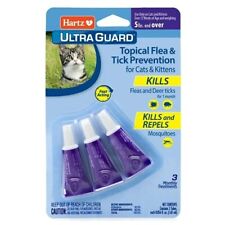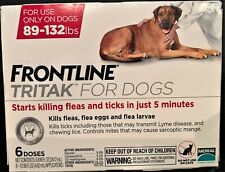FAQ: Keeping Pet Rats Happy & Healthy

What types of rat are there?
Laboratory breeding gave rise to two albino strains of comparable size to the brown (wild) rat, and a smaller, bi-colored strain. This is known as the ‘hooded’ rat – a white rat with the appearance of having a hood by the presence of a differently colored head and shoulders, with the color extending down the length of the spine. The first of these had black hoods but now you can find a variety including chocolate, cinnamon, fawn, cream and agouti. Hooded rats are not always ‘hooded’ however, and can be entirely colored. There is also a strain which is black with white feet known as the black Irish.
Where does the domestic rat come from?
Pet rats came about through the mutant albino strain of the wild rat, which even today shows more tolerance and affection towards humans than their colored counterparts. This was observed some centuries ago and due to their natural tameness they were adopted as laboratory animals. Most pet rat types have been bred from the same laboratory stock.
Do rats make good pets?
Put simply, rats make wonderful pets. If you have kept other small pets such as gerbils or hamsters you will be astounded by your first rat. Far from simply putting up with human contact, rats actually seem to enjoy it and seek it out at any opportunity. Rats are clever and determined and require a lot of stimulation if they are to be kept happy. Ideally, they will need to be given frequent access to areas of your house for exercise. Rats are large enough and bold enough that, with proper care and attention, there should be little risk of losing them. It might be wise to choose the sex of a rat based on what kind of pet you want. Very often male rats are more appreciative of human contact and are generally more of a ‘lap dog’ than females. Females are usually far more active, being inquisitive and excitable.
What kind of housing do they need?
Rats are such inveterate gnawers that soft-wood cages would never contain them. Suitable cage building materials include hardwood, molded plastics, metal and glass. Ideally the rat should have plenty of space for exercise in all forms – running and climbing, and also plenty of places for food hoarding and toilet habits. Try to avoid mesh since rats have been known to get their teeth stuck between wiring. In saying that, standard aquariums are also not ideal. Try to find an aquarium with ventilation lower down in the tank, since rats suffer greatly from respiratory disease. If using a wood-based cage it is advisable to have the floor tiled to make cleaning easier.
How much exercise do rats need?
Rats are intelligent enough to enjoy the challenge of finding their way to a goal – some prized tidbit – through a a maze constructed for them by an understanding owner. They also seem to appreciate freedom to explore their own room. If you must give them an exercise wheel, make sure it of the solid variety, since they make get their tails caught between the wires of an open wheel.
Do rats need bathed or groomed? Will the cage need a lot of cleaning?
Rats do not generally smell if kept in hygienic conditions. Floor litter will generally need renewing at least once per week. It is a good idea to scrub the cage at the same time, especially if using a wooden-based cage. Keep another cage handy to house them in when you are doing this. Try to keep hold of a certain amount of their bedding to return to the cage after cleaning. This is unlikely to be dirty and will comfort your rat. Also, if your rat enjoys hoarding food or prized possessions from its room, try not to disturb his hoard too often. Rats are fastidious about their personal hygiene and will groom themselves adequately without help from their owners.
What should rats be fed?
Rats are omnivorous, meaning they can eat both meat and vegetables. It is a good idea to feed your rat with bowls that can be scalded in hot water after use to maintain cleanliness. The basis of your rat’s diet should be whole or rolled oats or wholemeal bread and milk. Raw fruit and vegetables should be given daily. Favorites include carrot, celery and apple. Green food should be fed only in moderation – dandelion, watercress and raw spinach being considered particularly good. Citrus fruits should be avoided as the acetic acid content can cause bloating and stomach problems. Hay is also important to rats. A salt lick is not really required as rats get most of their required intake from their food.
How do I handle my rat?
Despite their obvious agility, rats are particularly docile and gentle being held. If handled frequently from when they emerge from the nest, rats will become incredibly tame and easy to handle. They are most easily tamed by feeding from the hand, a practice it is wise to continue throughout their life. Once your rat trusts you and is easily handled, it is accepted practice to scoop a rat up with one hand, supporting his belly in your hand.
What ailments are rats prone to?
Like most other small animals, rats do not have strong recuperative powers – the emphasis being on prevention through very high standards of care. Rats are prone to respiratory tract infections such as bronchitis and pneumonia. Avoid sudden changes in temperature, draughts and dampness which may lead to these conditions. Another common complaint is an allergic reaction to dusty hay or sawdust. Use only best quality hay and softwood shavings rather than sawdust as a floor litter, as sawdust aggravates chest problems. As rodents, rats’ front teeth grow continuously – fruit tree branches, chicken bones and shelled nuts provide a good source of chewing material. Overgrown incisors must be avoided at all costs since, although still carried out, clipping of teeth fractures the teeth and can cause further complications. Female rats are 80% more likely to develop mammary tumors. Although these are mostly benign, it is something worth considering.













